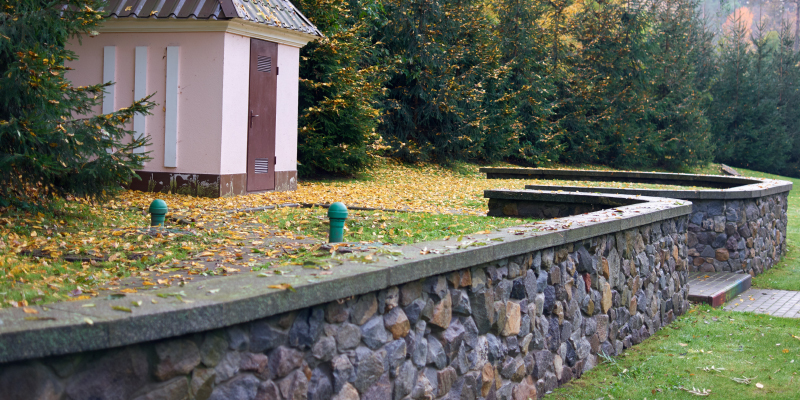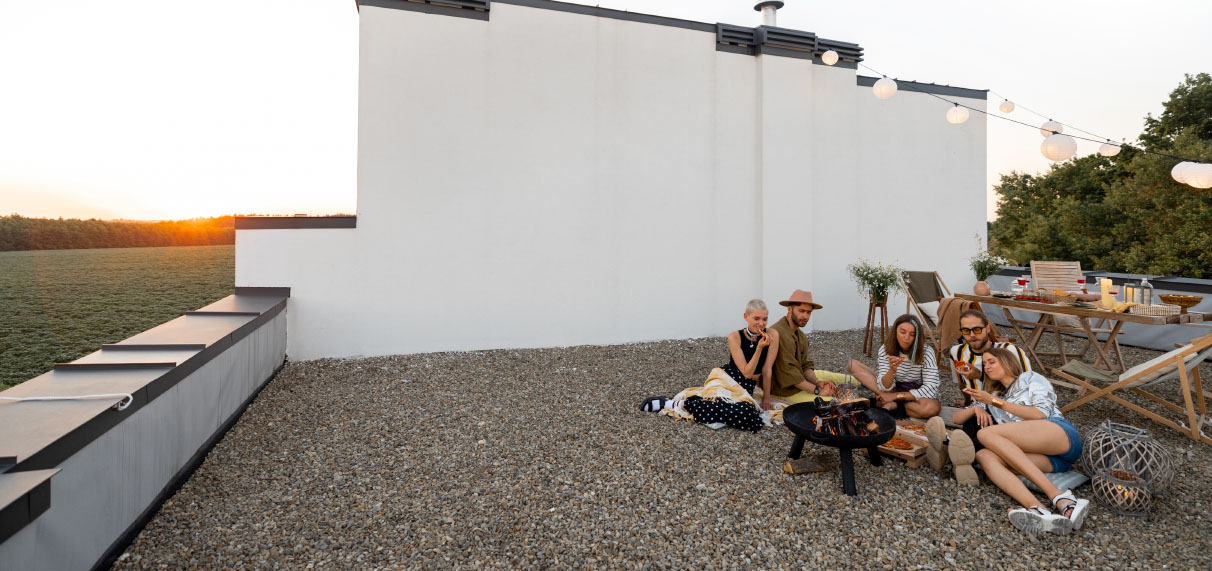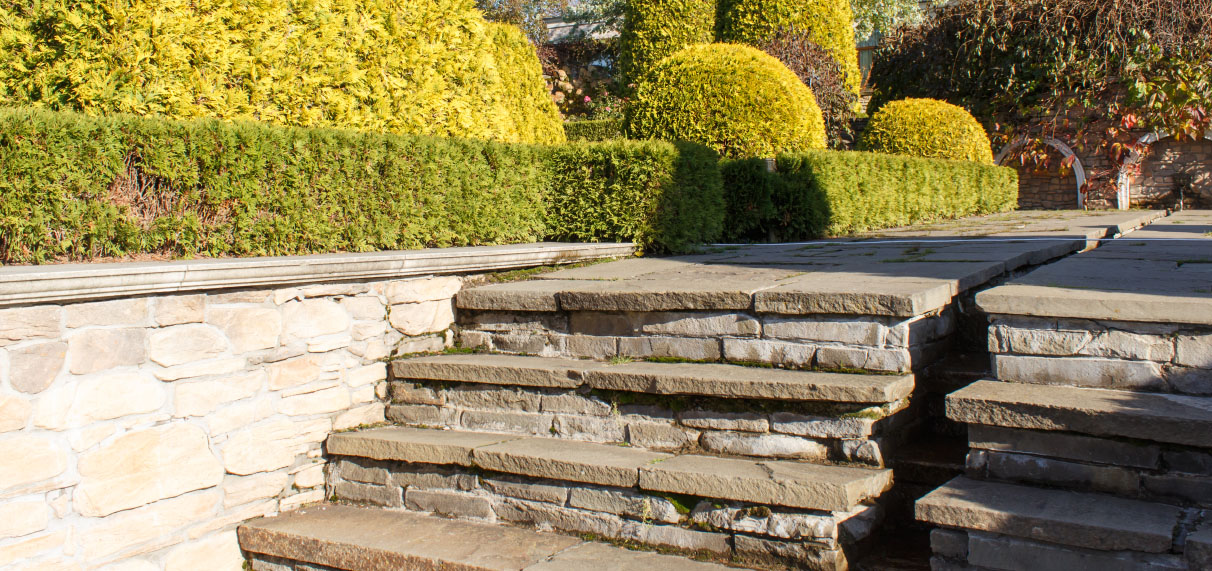Coping Stone Buyer's Guide

You’ve been told you need some coping stones or your existing coping is looking worse for wear, right? It’s likely you’ve never needed to pick coping stones before, or you may have not even known what they were until now.
In this guide to coping stones, we’re going to answer all the questions you may have. From understanding the role coping plays to choosing a material for your project, you’ll go away with all the knowledge you need to choose the ideal coping for your project.
What is a Coping Stone?
A coping stone is sat on the top of a wall to protect the masonry or brickwork beneath from harsh weather. As well as offering crucial protection from the elements, coping stones also provide a sleek and professional finish to the wall.
You’ll notice coping stones all around you. From the retaining wall of a garden to the surround of a flat roof, they are commonplace whenever a wall or structure requires a capped top. These will usually be made from concrete, granite, porcelain, or metal.
Uses for Coping Stones

Walling
Whether it be a double skin retaining wall or single skin dividing wall, they’ll likely benefit from coping stones. This is as coping will prevent rainwater from running down the face of the brickwork or masonry, therefore preventing grime and dampness.
Roofing
Flat roofs will often be surrounded by a low-mid height wall, which hides the edging of roofing materials and provides a barrier to make the space safer. Of course, the coping stones will also help to keep rainwater away from your brickwork or masonry to prevent moisture build-up.
Coping Stone Materials
Concrete
Concrete offers the rare combination of durability and low cost. This makes it a favourite for various building supplies, including coping stones. As well as being able to withstand typical knocks, concrete coping stones will require the least amount of maintenance. This makes them ideal for flat roofs, where access is difficult and its largely hidden from sight.
Granite
If you’re in search of a sophisticated material that ages naturally, then granite is the ideal choice. This is as granite coping has natural variations in tone and colour that become exasperated as they age. The toughness and aesthetic of granite makes it a great mid-point between concrete and porcelain coping stones.
Porcelain
Without doubt the most luxurious of materials, porcelain has a light-gloss appearance and is non-porous. Being non-porous allows porcelain coping stones to resist many chemicals, most stains, and water ingress. This allows porcelain to maintain its appearance for several years, although it can be more susceptible to chips and cracks.
Metal
Whilst stone coping stones remain the most popular choice, a modern alternative is becoming increasingly common. Metal coping stones fulfil the same role but are easier to fit as well as longer lasting. You’ll likely find that metal coping is also available in far more sizes and colours to suit your specific project.
Types of Coping Stones

Single Weathered Coping
In some scenarios you’ll need to channel water in a single direction, such as on the surround of a chimney. If this is the case, you’ll want to use a single weathered coping stone that is angled to shed water one way. On the side where water will run off, you’ll find a drip check that catches rainwater before it makes contact with the wall.
Twice Weathered Coping
If you require water to be channelled in both directions, then you’ll need a twice weathered coping stone. This type of coping is ideal for garden walls, where the primary aim is simply to direct rainwater to the ground beneath without causing dampness on the wall. These copings will usually have a drip check on both sides.
Flat Coping
For a contemporary and minimalist aesthetic, flat coping stones are ideal. Whilst they may not shed rainwater as effectively, they’re great for placing on a wall that will be accompanied by railing or perhaps have seating. Like other coping, these will often have a drop check on both sides to keep water away from the wall beneath.
Which Coping Stone Should You Use?
Where It’ll Be Used
Whilst all coping stones will be used on top of a wall of some type, consider what you need it to achieve. If you need water to be directed in a particular direction, you’ll want to use single weathered coping. But if you are happy for water to be directed in either direction, then twice weathered coping will be ideal.
Equally, where your coping will be used should determine the material you pick. If your coping stones will be used somewhere that’s rarely seen, such as on an unused flat roof, then metal or concrete are cost-effective options. But if your coping stones will be used in a garden or flat roof used for socialising, then either granite or porcelain are wonderful choices.
How It’ll be Maintained
In truth most coping doesn’t require regular maintenance. But if your coping stones will be in a prime location, such a surrounding a patio, then you’ll want to show them a little TLC. How much will be necessary to keep them in good condition depends upon the material, as more porous materials (such as concrete) will stain easier than less porous materials (such as porcelain).
The easier coping stones to maintain are metal and porcelain. A wipe down with a wet sponge and a gentle soap every so often will keep them looking new. On the other hand, concrete and granite coping may require a little more work. A jet washer with a gentle soap should do the trick, but some discoloration or staining is unavoidable.
What Size You Require
Whilst most coping stones are 600mm in length, their widths can vary from 175mm – 450mm. This allows you to get the ideal size for your project, whether you’re placing coping onto a single skinned or double skinned wall. Ideally, you should have an overhang on each side of your wall of 25mm or greater.
When buying coping stones, consider the amount of overlap you’ll have as well as how far the drip check is located from the edge of the coping. If your drip check is located too closely to the face of your wall, it will be ineffective at shedding water away and you will likely experience the issue of dampness.
Your Budget
Of course, you need to pick a coping that suits your budget. Thankfully, coping is available in a range of materials to suit both low and high budgets. Here are some great options for each:
Low-Cost Coping Stones
Concrete is without doubt the most cost-effective type of coping available. But despite being low-cost, it offers brilliant longevity with it being resistant to most chips and maintaining its colour for many years.
Mid-cost Coping Stones
Although the most aesthetically pleasing, porcelain is a great middle ground when it comes to cost. With it being virtually non-porous it will maintain its visual appeal for years, but it is a little easier to chip and crack.
Premium Coping Stones
Granite offers a unique combination of sophistication and durability. In most cases, this makes it the costliest coping available. But granites natural variations in colouring and ability to age like a fine wine makes it a true statement piece.
Have More Questions?
If you’re still unsure which coping stone is the right fit for you, get in touch with our award-winning team. They'll help you choose the ideal coping for your application as well as ensure you have the necessary ancillary products, such as coping adhesive.